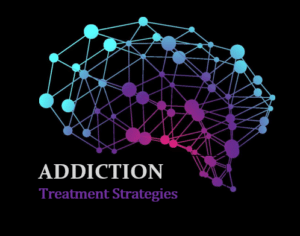Key differences of AA and ATS 12 Steps
Key Differences Between AA and ATS Addiction 12 Steps
In some of the previous posts we’ve been looking at the differences in a twelve-step approach to addiction intervention as well as a cognitive behavior therapy approach. We were comparing and contrasting the two approaches. There’s three more to do and we’ll pick up with the AA approach in terms of step ten.
Step Ten AA vs. ATS
AA step ten says basically, “I contend you to take a personal inventory and when we were wronged promptly admitted it.” That’s a very sophisticated process in terms of patients with an addiction have very limited insight or introspection of why they’re doing what they’re doing and that almost takes a professional person to point out some of the ways in which they can look at whats happening.
At ATS we start with, “I will endeavor to consistently inquire as to my behavior and demonstrate an addictive behavior being that I have a tendency to be deceitful, dishonest, and manipulative”. What we’re doing there is including some of the operational definitions that are associated with addictive behavior but even with that component of step ten, by the time our patients get to step ten they’ve already engaged in a consistent amount of behavioral change. Before we get the cognitive components back online you have to have behavior online. Our behavioral intervention has a lot with whether people have a capacity to look at what it is they’re doing and that’s the upper part of the prefrontal cortex. Even though both of them are somewhat similar to the moralistic approach, it is very complicated because it requires the person to look at themselves subjectively and that’s too complicated to do on your own. You almost need a guided intervention with that one.
Step Eleven AA vs. ATS
Step eleven for AA is, “Sought through prayer and meditation to improve our conscious contact with God as we understood Him, praying only for knowledge of His will for us and the power to carry that out”. That once again has a moralistic tendency to that where the individual is pretty much on their own with regards of their thoughts and their ability to pray and receive some type of intervention from their perception of whatever their idea of God means.
ATS step eleven says, “I recognize I will be improved through structure organization and discipline. I will seek to achieve a balance in my life through awareness of sleep patterns, exercise, and diet”. What we’ve done is taketh moralistic approach out of it and looked at behavioral structuring of an individual. When we say structure organization and discipline, what we’re trying to do is put a position for a person to respond consistently to an organized approach with their life. Structure organization and discipline means basically have a daily plan, get that daily plan rank ordered in regards of what you need to get accomplished, and then implement it. That is the essence of the scientific approach to any problem is to have some type of dependent variable where were manipulating another variable to see how effective am I doing this? Step eleven is the scientific approach where were interested in looking at the impact that sleep patterns have on someone’s behavior, what exercise has on someone, both mental and physical exercise, and the other patterns we’re looking at is diet. The foods that influence how well people are doing and certainly if you have an addiction we have a diet program that assists people in there are twelve or thirteen different foods we recommend they eat that promotes brain growth. That’s step eleven.
Step Twelve AA vs. ATS
Step Twelve for AA is, “ Having had a spiritual awakening as the result of these steps, we tried to carry this message to alcoholics and to practice these principles in all our affairs”. That’s for sure an important part of any religious experience. Taking the word out to the masses to get them in a position where they can also respond.
ATS step twelve is, “ I will share my knowledge of my addictive behavior with others in an appropriate format that leads to understanding a behavior change”. The operative word for us would be behavior change. You need to be able to change behavior regardless of how it is you feel or how it is you that you think. Behavior change is what makes people stable so that they can react in a predictable fashion and be considerably less compulsive.
So as a result of all of these twelve steps, what we’ve done is balanced a moralistic approach to a behavioral neurological or scientific approach. It has far better outcomes and that’s basically in a summary the differences between AA and the ATS approach of the twelve steps.
Contact us at (618) 692-6880







Leave a Reply
Want to join the discussion?Feel free to contribute!